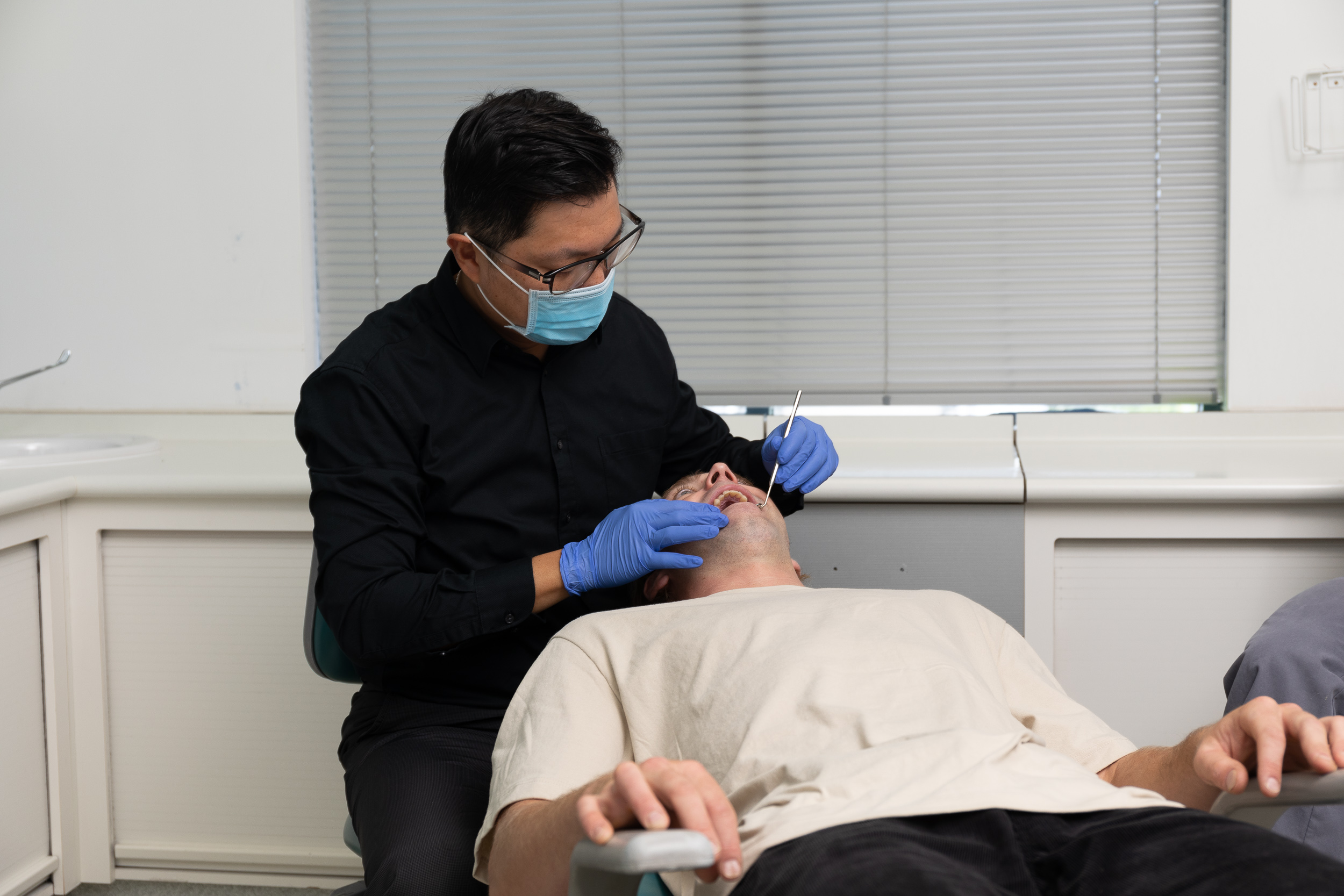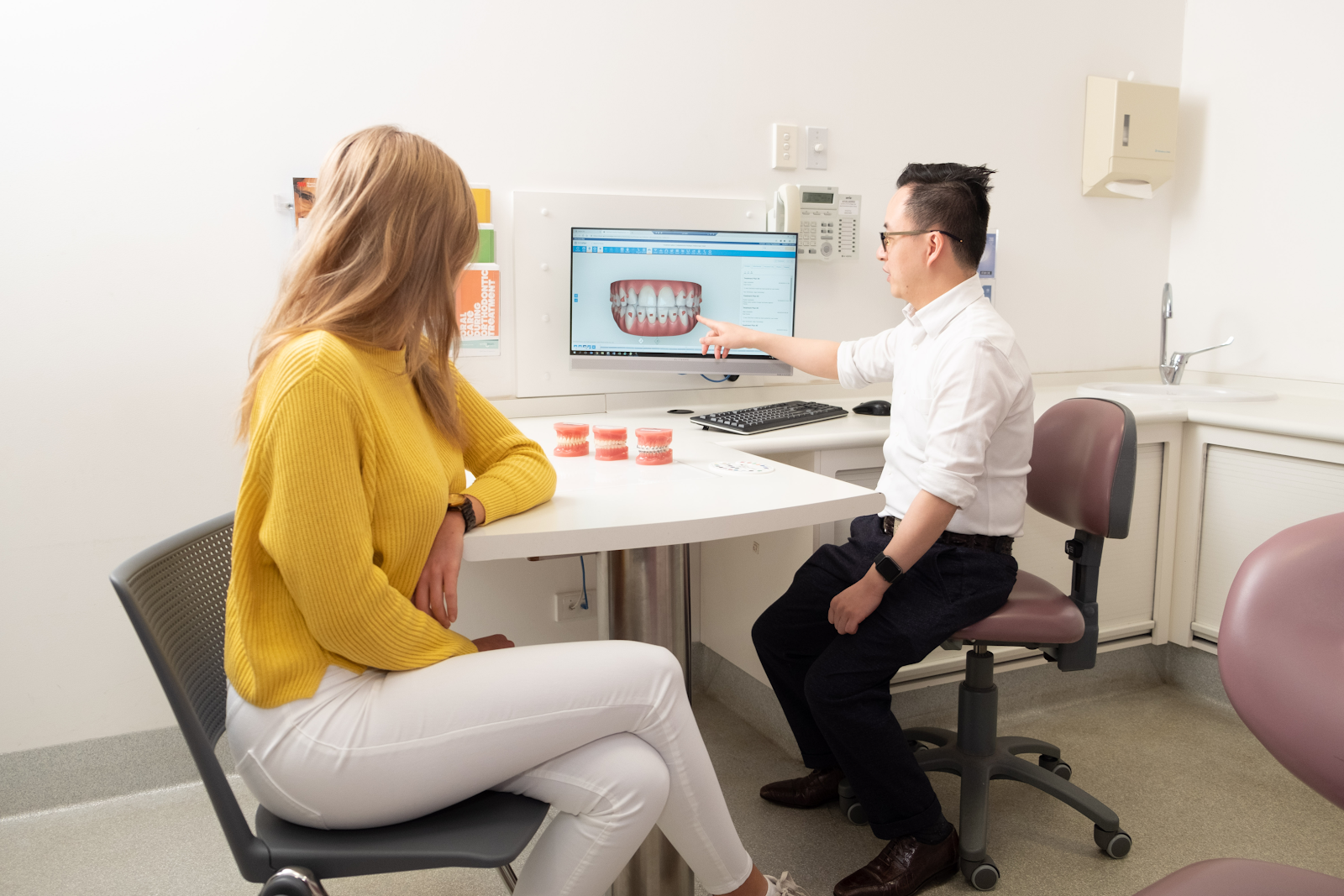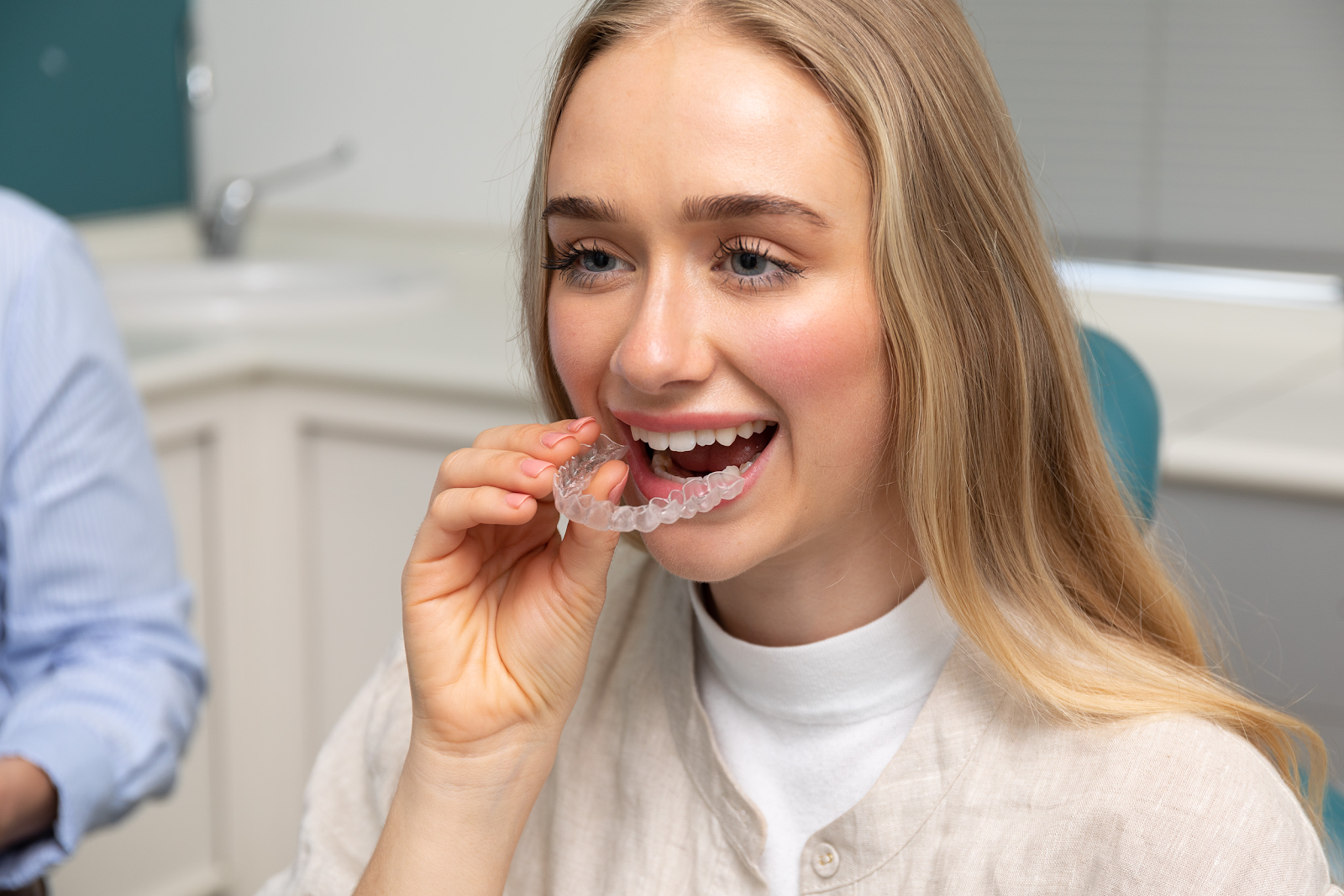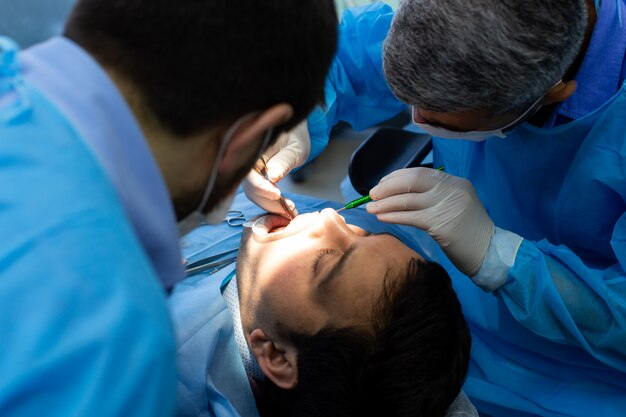
An underbite, also known as a Class III malocclusion, occurs when the lower teeth sit further forward than the upper front teeth. While some may view it as just a cosmetic concern, the reality is that untreated underbites can lead to a range of health and functional issues—such as difficulty chewing, speech problems, jaw pain, and tooth wear.
If you’ve noticed this condition in yourself or your child, it’s worth understanding the root causes, potential complications, and the treatment options available. In many cases, early orthodontic intervention can help prevent more complex procedures later on.
If you’re considering orthodontic care, explore treatment options available through Smile Team to find what’s right for your situation.
What Is an Underbite?
An underbite is a dental condition where the lower jaw extends further than the upper jaw, causing the bottom front teeth to protrude. This jaw misalignment is typically due to imbalances in jaw growth or dental crowding, and it can be either mild or severe.

Quick Comparison: Underbite vs Overbite
| Condition | Description | Potential Issues |
|---|---|---|
| Underbite | Lower teeth extend past upper front teeth | Jaw pain, tooth wear, digestive issues |
| Overbite | Upper teeth extend over lower teeth | Gummy smile, enamel wear, bite imbalance |
Underbites are more than just an aesthetic concern—they often affect jaw function and long-term oral health. Fortunately, with today’s orthodontic advancements, several non-invasive and surgical solutions are available.
What Causes an Underbite?
Underbites can develop due to a combination of genetic, skeletal, and environmental factors. Here’s a breakdown of the most common causes:
Genetic Influence
- Family history: If parents or grandparents had an underbite, it’s likely to be inherited.
- Jaw structure: Genetics often dictate whether the lower jaw is more prominent.
- Craniofacial syndromes: Certain rare conditions, such as Crouzon or Treacher Collins syndrome, may involve underbite development.
Childhood Habits
- Prolonged thumb-sucking or dummy use beyond the age of three can impact jaw alignment.
- Bottle-feeding into late infancy may influence jaw positioning.
- Tongue thrusting during swallowing can push lower teeth forward.
Skeletal and Soft Tissue Factors
- Skeletal discrepancies between the upper and lower jaw can develop over time.
- Lip positioning and the strength of surrounding muscles may also influence bite alignment.
Types of Underbites
Underbites vary in severity, and treatment options often depend on how noticeable or functionally limiting the condition is.

Mild Underbite
A mild underbite shows slight overlap of the lower teeth over the upper ones. In many cases, this is barely visible and may not cause any functional problems. Still, monitoring and early correction can prevent it from worsening.
Moderate Underbite
This type is more noticeable, with the lower teeth clearly sitting ahead of the upper front teeth. Patients may begin to experience jaw tension or uneven wear on teeth.
Severe Underbite
A severe underbite involves significant jaw protrusion and often requires surgical intervention. Patients may struggle with chewing, speaking clearly, or closing their mouths comfortably.
Signs and Symptoms of an Underbite
Underbites can lead to a range of symptoms, from mild discomfort to persistent dental and muscular issues.

Common signs include:
- Difficulty biting and chewing food
- Jaw pain or stiffness, particularly after eating
- Chronic mouth breathing and heavy snoring
- Speech difficulties or a noticeable lisp
- Tooth enamel wear or increased risk of decay
- Misalignment that makes it hard to maintain oral hygiene
Tip: Early orthodontic consultation can help determine whether a child’s bite is developing correctly. For parents, noticing jaw misalignment during the early school years can lead to simpler treatments.
What Are the Health Risks of Leaving an Underbite Untreated?
Ignoring an underbite can have long-term consequences beyond appearance. Here’s what may happen if left uncorrected:
Jaw Strain and Pain
Misalignment causes uneven pressure on the jaw joint, which can result in temporomandibular joint disorder (TMD). This can lead to chronic jaw clicking, soreness, and even neck pain.
Tooth Wear and Gum Issues
An improper bite increases friction between teeth, leading to:
- Chipped or worn enamel
- Increased gum recession
- Higher risk of gum disease
Digestive Issues
Chewing efficiency can be compromised, affecting digestion. When food isn’t broken down properly, the stomach has to work harder, possibly causing discomfort or bloating.
Sleep Apnoea or Breathing Trouble
In some cases, severe underbites are associated with obstructive breathing during sleep, leading to snoring and increased fatigue.
How Is an Underbite Diagnosed?
Diagnosing an underbite starts with a comprehensive orthodontic assessment. A qualified orthodontist will examine both the dental alignment and jaw structure.
Diagnostic Tools May Include:
- Physical examination: Checking how teeth meet when the jaw is closed.
- 3D imaging or cephalometric X-rays: Helps evaluate jaw size and relationship.
- Bite impressions or digital scans: Offers a closer look at how teeth align.
At Smile Team, we utilise advanced digital technology to provide a precise analysis of your bite. Our team ensures that each patient receives a tailored diagnosis and treatment plan based on their specific dental anatomy.
Underbite Treatment Options
The good news is that most underbites can be corrected with the right treatment. The approach depends on factors like age, jaw development, and severity.
Braces
Braces remain the most common solution for underbites. They apply gentle pressure over time to move teeth into proper alignment.

Ideal for: Children, teens, and adults with mild to moderate underbites.
Pros:
- Proven and widely used
- Can correct other issues (crowding, gaps) simultaneously
Cons:
- May take 12–30 months
- Regular adjustment appointments are required
Clear Aligners
Clear aligners such as Invisalign are transparent, removable trays designed to gradually shift teeth. They work well for mild underbites but may not be effective in severe skeletal cases.
Pros:
- Nearly invisible
- Removable for eating and brushing
- Comfortable and custom-fit
Cons:
- Less effective for complex cases
- Requires strict patient compliance
Palatal Expanders
Often used in children, these devices help widen the upper jaw, allowing better alignment with the lower teeth.
Pros:
- Non-surgical
- Can prevent the need for future surgery
Cons:
- Best used before puberty
- May cause temporary discomfort or speech changes
Orthognathic (Jaw) Surgery
In adults with severe jaw discrepancies, corrective jaw surgery may be necessary. This involves repositioning the jaw bones to achieve proper bite alignment and facial symmetry.

Pros:
- Permanent correction
- Can improve facial structure and sleep quality
Cons:
- Invasive and requires recovery time
- Usually recommended after skeletal maturity
Reverse-Pull Headgear (Facemask Therapy)
This treatment involves an external device that pulls the upper jaw forward. It’s most effective in children under 10, whose bones are still developing.
Pros:
- Non-surgical
- Encourages balanced facial growth
Cons:
- Must be worn consistently (12–14 hours daily)
- Can be bulky or uncomfortable
Early Orthodontic Intervention in Children
According to the American Association of Orthodontists, children should have their first orthodontic check-up by age 7. At this stage, orthodontists can detect bite issues like underbites and intervene early.
By guiding jaw growth while bones are still developing, treatment is often faster and less invasive than if delayed until adulthood.
Underbite FAQs
To further guide you, here are answers to some of the most commonly asked questions about underbite correction.
Is an underbite serious?
Yes. An untreated underbite can lead to tooth wear, jaw pain, sleep apnoea, and digestive issues. The earlier it’s diagnosed, the more manageable the treatment.
At what age should underbite treatment begin?
Orthodontists recommend that children be assessed by age 7. Early intervention allows for jaw growth guidance and may prevent the need for surgery later.
Can underbites correct themselves as a child grows?
In rare cases, slight underbites may improve with natural growth, but most will require orthodontic intervention. The earlier the correction begins, the more effective and affordable the treatment.
How long does underbite treatment usually take?
Treatment duration varies based on the method used:
- Braces: 12 to 30 months
- Clear aligners: 6 to 18 months (mild cases)
- Surgery: Varies depending on complexity and healing
Is underbite treatment painful?
Mild discomfort is common, particularly when appliances are adjusted. However, this is temporary and manageable with over-the-counter pain relief. Most patients adapt quickly to their treatment.
Can underbites cause speech issues?
Yes. Misalignment may affect how the tongue moves during speech, causing lisping or difficulty pronouncing certain sounds. Correcting the bite often improves articulation.
Do underbites get worse with age?
They can. Especially if jaw growth continues into adolescence or adulthood, underbites may become more pronounced and harder to treat without surgery.
Why Early Diagnosis Makes a Difference
Spotting an underbite early—especially during childhood—opens the door to simpler, less invasive solutions. Orthodontists can take advantage of the natural growth process to correct jaw alignment and avoid future surgical procedures.
Signs to watch for in children include:
- Lower teeth visibly overlapping upper teeth
- Chronic mouth breathing
- Unusual jaw movement when speaking or chewing
If you’re unsure whether your child’s jaw development is normal, it’s worth scheduling a professional assessment. Even if no treatment is needed right away, your orthodontist can monitor growth and intervene if things start to shift.
Conclusion: Reclaim Your Smile with Confidence
An underbite may start as a mild concern—but if left unaddressed, it can become a source of pain, discomfort, and self-consciousness. The good news? Modern orthodontics offers a wide range of effective, customised treatment solutions.
Key Takeaways:
- Underbites affect more than appearance—they can impact jaw function, digestion, and oral health.
- Treatment options range from braces and aligners to surgery, depending on severity.
- Early diagnosis in children often leads to quicker and less invasive treatments.
- Adults can still benefit from treatment, including surgical correction for more complex cases.
- Partnering with an experienced orthodontist is crucial to getting the right solution.
Whether you’re exploring options for your child or yourself, our friendly team is here to help. Book a consultation to learn more about personalised underbite treatments tailored to your needs.
